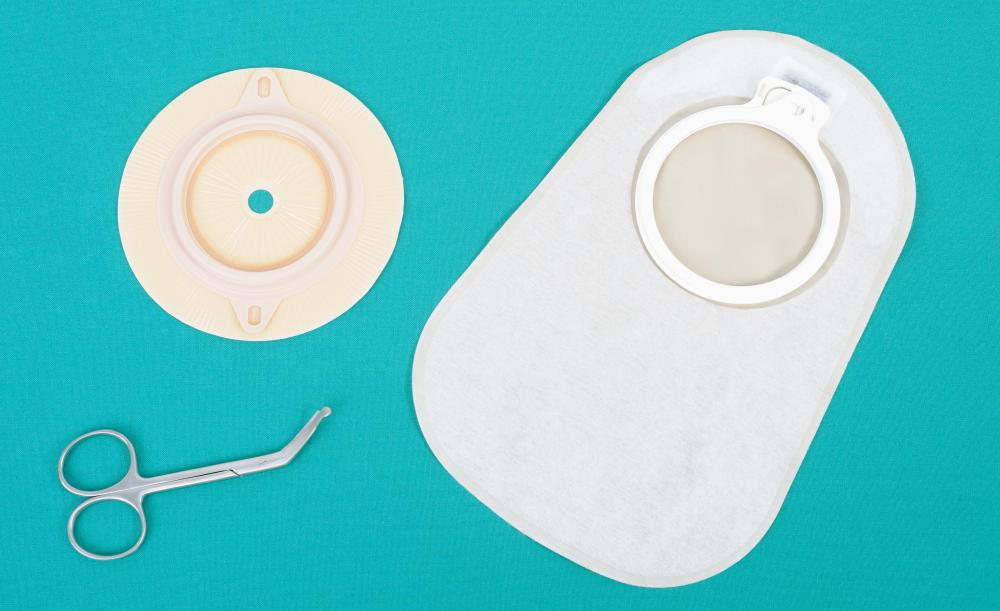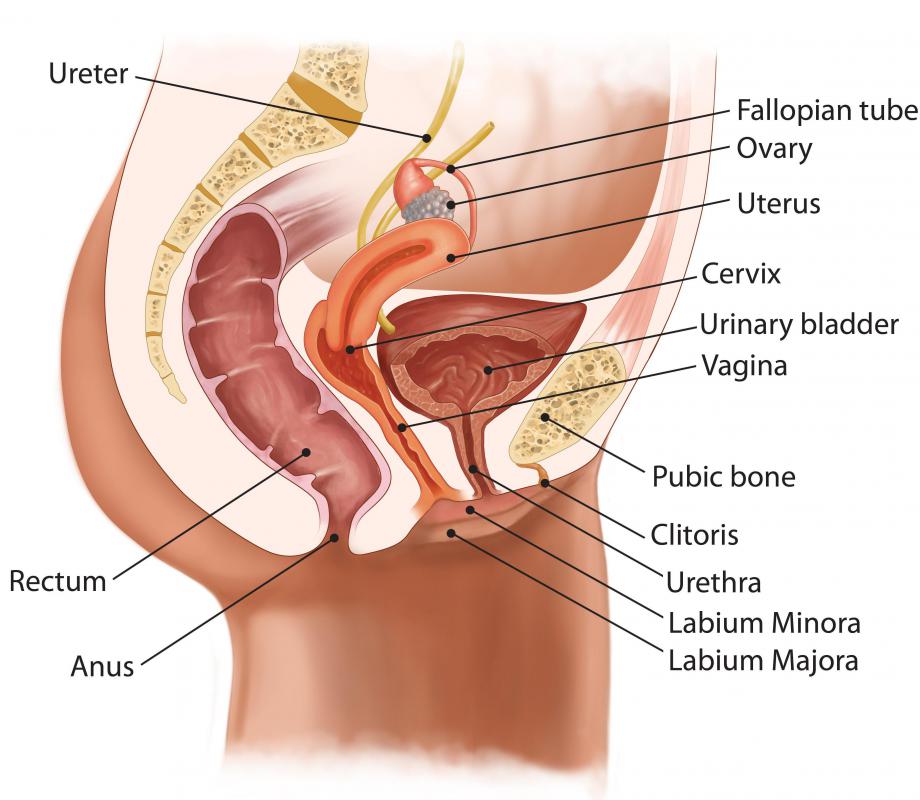At WiseGEEK, we're committed to delivering accurate, trustworthy information. Our expert-authored content is rigorously fact-checked and sourced from credible authorities. Discover how we uphold the highest standards in providing you with reliable knowledge.
How do I Care for a Colostomy Patient?
Colostomies are performed for various reasons, including trauma, blockage and infection. The procedure is quite intense and requires a commitment to colostomy aftercare by the patient, nursing staff and doctors. Caring for a colostomy patient requires you to have knowledge and compassion.
Conditions such as diverticulitis, inflammatory bowel disease, cancer or trauma sometimes require a colostomy. In general, the surgery lasts two to four hours. The most common type of colostomy procedure is the Hartmann colostomy, a procedure in which the colon is cut in half. The end of the colon that leads to the stomach is fed through the abdomen wall and attached to the skin. This area is the stoma.

After surgery, the end of the colon near the rectum grows dormant. Most colostomies performed can be reversed after the affected tissues of the colon heal. In the days following surgery, you should check the stoma’s appearance to ensure that it remains red and moist.
If there is any change in color, especially a darkening to a purple or black tone, you should immediately share this information with the surgeon. Check the abdomen for distention or bleeding near the incision site. Intake and output must be monitored to reduce the patient’s risk of dehydration or electrolyte imbalance.

Within six to eight weeks, the swelling will reduce, and the stoma will shrink to its normal size. The stoma and surrounding skin should be assessed on a routine basis. Note the color and height of the stoma, and look for skin damage such as blisters, ulcers or rashes.
Patients with certain types of colostomies — descending or sigmoid — might choose not to wear a pouch and opt for irrigation instead. To prepare for irrigation, the colostomy patient should take a seat on the toilet. Insert a flexible catheter coated in water-soluble jelly no more than 3 inches (7.6 cm) into the stoma. Stop at the first sign of resistance. If necessary, use a gloved and lubricated finger to dilate the stoma.

After the catheter is in place, 16.9 to 33.8 ounces (500 to 1,000 cc) of warm fluid fills the colon. If the colostomy patient experiences cramping, the fluid flow should be stopped until cramping subsides and then continued slowly. The fluid remains in the colon for a few minutes before being drained into the toilet.
Sometimes side-to-side or back-and-forth movement will encourage the fluid return rate to increase if slowed. The colostomy patient should note the amount and fluid type returned after irrigation. Any obstruction or prolapse of the stoma must be reported immediately.

Patients who must use a pouching system can choose between disposable or reusable and one-piece or two-piece. In the one-piece system, the wafer and pouch are connected and attach to the stoma site. The wafer and pouch are separate in the two-piece system. The wafer attaches to the skin and the pouch to the wafer. The colostomy patient should weigh the advantages and disadvantages of each system.

To change the colostomy bag, carefully remove the attached system. Be gentle with the wafer removal. Adhesive remover can be used to prevent skin breakdown. The area around the stoma should be cleaned and dried. Take note of any skin damage, and seek proper treatment for the patient in the case of rash, blistering or fungal infection.
Apply sealant to the skin surrounding the stoma and apply the new wafer. To keep the abdomen flat, the colostomy patient might find that standing works best. Place the wafer against the skin. The stoma should fit through the hole with a ring of space between the stoma and the wafer.
Use your finger to apply pressure to the wafer and ensure proper skin adhesion. Connect the pouch to the wafer. A clicking sound will occur when the plastic circles seal. Place the tail closure on the open end of the pouch.

Colostomy patients should tell their doctors about any abdominal pain, fever or skin irritation. A change in bowel habits or a hernia — often appearing as a bulge around the stoma — requires further medical care. Problems with leaking at the stoma site or a desire for a different pouch system can be easily solved by a visit with a physician.
AS FEATURED ON:
AS FEATURED ON:

















Discuss this Article
Post your comments